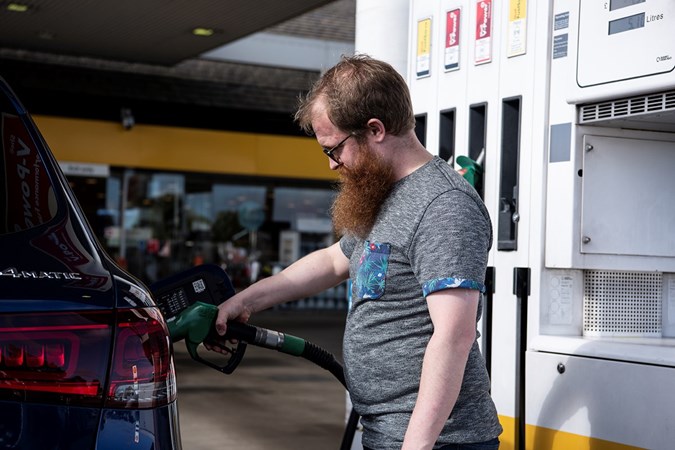Car ownership costs continue to rise in 2024, with no indication of slowing. Interest rates are up, insurance premiums are sky-high, and fuel prices are rapidly increasing leaving motorists feeling the pinch. While these expenses are unavoidable, there are effective ways to cut costs and save money.
On this page, we’ll outline some quick and easy tips to help you keep more money in your pocket. We’ve provided a bullet-pointed summary below, but scroll down for our in-depth explanations:
- Find your cheapest fuel station
- Shop around for insurance quotes
- Consider leasing over buying
- Take an advanced driving course
- Prepare for your cars MOT
1. Find your cheapest fuel station

This may seem like a fairly obvious one, but filling up at a cheaper fuel station will make all the difference. We have all been there, frantically driving to find the nearest garage because you left the tank near empty. But fuel is arguably one of the priciest aspects of car ownership, and frequently filling up at costly pumps will add up over time.
By shopping around and finding a cheaper garage, you will noticeably save money on your monthly fuel expenditure. Opting for a supermarket to fill up at is wise, despite some myths suggesting the fuel is somehow less efficient, which is not the case. Supermarkets usually have deals and loyalty points which can save money.
Ditch high octane
You will have seen E5 and E10 petrol pumps at your local forecourt. E10 reduces emissions but cuts fuel economy and it’s worthwhile experimenting with both to see how your car performs.
However, the high octane stuff you often see advertised as Ultimate, Supreme or Excellium is usually a waste of time for the typical supermini driver. It’s generally 10% more per litre and is very rarely worth the extra money unless you have a performance car that’s been engineered with it in mind.
Use petrol pricing apps
Apps such as PetrolPrices are pretty simple. They provide prices from petrol stations close to you, allowing you to choose the cheapest one. PetrolPrices reckons a typical member saves £200 per a year using it.
2. Shop around for insurance quotes
Insurance premiums are at an all time-high, with the average policy increasing by 14.6% in the past year, according to research by Consumer Intelligence. This significant annual cost is one of the biggest challenges motorist face and can make the prospect of driving and owning a car unattractive. But with a few haggling skills and some thorough shopping around you may be able to get those prices down.
Don’t accept the auto renewal price
Whatever you do, don’t simply accept the auto renewal price your insurance provider quotes you. Instead, call them up and haggle a price. Usually, the insurer will want to keep you as a customer and will often beat its own original renewal price.
Consider factors that influence your car insurance premiums, such as your location, where the car is kept overnight, your age and driving history. While no one expects you to drastically change your personal circumstances just to lower your car insurance, simple actions like reducing the number of miles you drive or storing your car in a garage can save you money.
3. Consider leasing over buying
Watch out for high APR
Leasing over buying can be more cost effective for new drivers and it can allow for frequent updates to the latest car models. Around 90% of new cars are bought (using either PCP or leasing) on finance. A good chunk of used ones are too. New car finance can range from 0-9.9% APR and used cars can be as high as 20%. It’s worthwhile searching around to find the lowest APR or, if you’re sure you want to buy, consider a good old fashioned bank loan, which can be as low as 2.9%.
4. Take an advanced driving course
Taking an advanced driving course can come in handy for learning how to tweak your driving style to motor more economically. Not only will it bring down your premiums on your annual car insurance, but it will teach you advanced techniques such as smoother braking and more efficient acceleration. Having these skills under your belt will save you both fuel costs and wear and tear on your car.
5. Prepare for your cars MOT

Frequent MOTs are a must for any vehicle, with the maximum cost fixed at £54.85 for cars. However, it’s not the initial test that motorists need to worry about, but the dent in the wallet if the car doesn’t pass. Approximately 1.5 million vehicles fail their MOT due to simple things such as faulty bulbs, tyre tread and empty washer fluid bottles, according to the Society of Motor Manufacturers and Traders (SMMT).
Simply performing these simple pre-MOT checks will save you so much time and money. Obviously, you won’t be able to fix everything yourself, but making sure things like your tyres and liquid levels are legal and safe will prevent your vehicle from failing.
FAQs
How can I improve my driving efficiency?
Improving driving efficiency is surprisingly simple and can be achieved with just a few small adjustments to your driving style. Done correctly, you can reduce fuel bills, cut carbon emissions, and lower accident rates while becoming a better driver without sacrificing performance.
- Drive smoothly
- Shift up early to a higher gear
- Avoid excessive speeds
- Switch off engine if stationary
- Check tyre pressure
- Remove roof racks, boxes and bars
- Use windows instead of air conditioning







